Browse other blog categories
Australia's Wildlife: Iconic must-see animals
Australia is a land of unparalleled natural beauty, teeming with unique wildlife that draws visitors from around the globe. From the worlds largest barrier reef with the Great Barrier Reef, to the vast outback and its abundance of unique wildlife, this diverse continent offers a wealth of opportunities for nature and wildlife enthusiasts. In this blog we'll dive into Australia's most iconic animals and how you can experience these incredible creatures!
Interested in checking out all that Australia has to offer? Download our Australia Travel Guide today to start planning your next Australian getaway!
Kangaroo
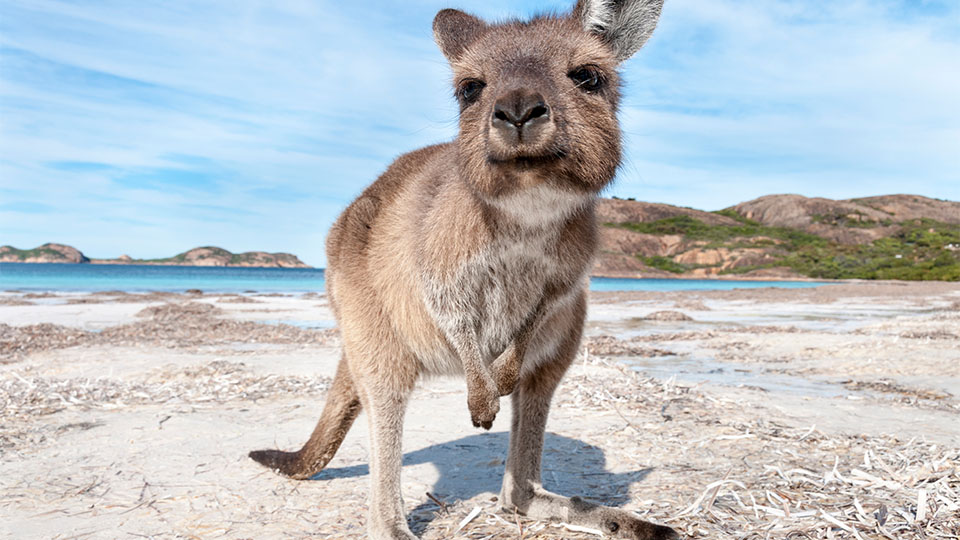
Arguably Australia's most iconic animal, the kangaroo is one of the worlds most unique marsupials. These beautiful creatures have taken residence as a symbol of the Australian nation, and are usually seen in flags, coins, business logos, and pop-culture. Coming in all shapes and sizes, the red kangaroo - the largest and most common kangaroo, are distinct with their red coloured fur, powerful legs, and large feet adapted for leaping. Seeing a kangaroo in the wild within Australia is not uncommon and can usually be found quite easily in Australia's many national parks, bushland, and occasionally on farm land. If you want to get up close and personal, we'd recommend a trip to the aptly named Kangaroo Island - where you can partake in their world-class wildlife safari.
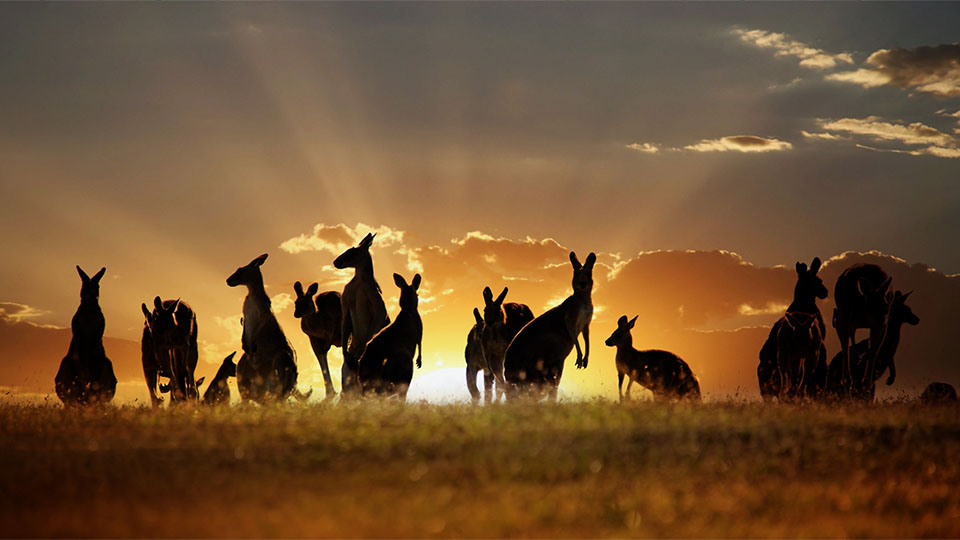
Often referred to as Australia's "zoo without fences," Kangaroo Island is a haven for wildlife. Explore the island's gorgeous landscapes with a guided wildlife safari and experience the home to kangaroos, koalas, echidnas, and an array of bird species. The tour takes you through Flinders Chase National Park, where you can witness the rugged beauty of Remarkable Rocks and Admirals Arch. On the tour, you'll encounter a number of kangaroo's and get the chance to get up-close to really experience these iconic creatures. This is definitely a tour you won't want to miss!
Crocodile
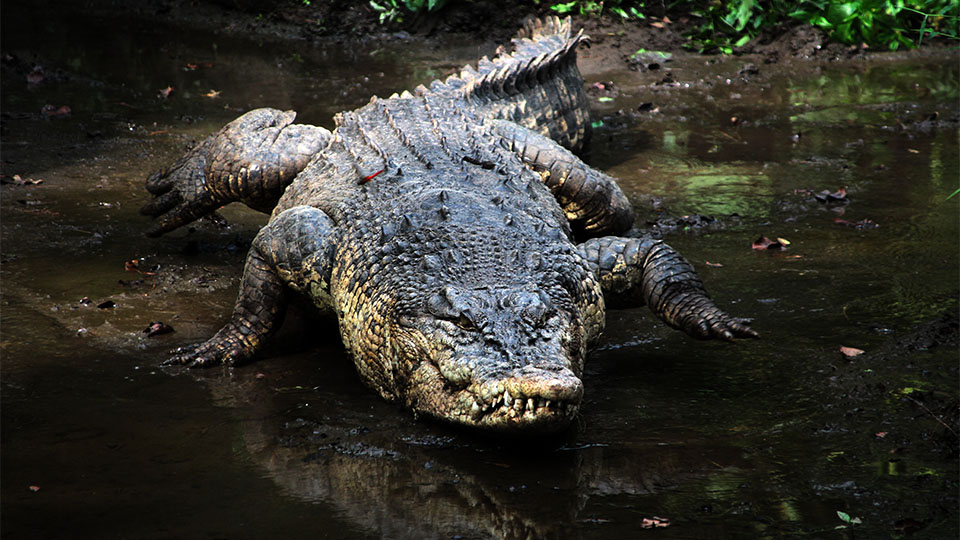
We can't talk about Australia's iconic animals without mentioning the Crocodile. These large semiaquatic reptiles live throughout northern Australia and can be found in both saltwater and fresh water. These ancient creatures are distinctive with their pair of scaley ridges that run from its eyes through to the tail. Crocodiles can grow upwards of 6 metres (20 ft) long and weigh a whopping 1,500kg! (3,300lb) Although these creatures are magnificent to behold, you definitely don't want to get near these creatures in the wild! Not nearly as common as the kangaroo, if you're diving into lakes and rivers (or even some beaches!) in the Northern Territory or North Queensland, make sure you check with local guides or for signage to indicate whether or not there are crocodiles in the area.
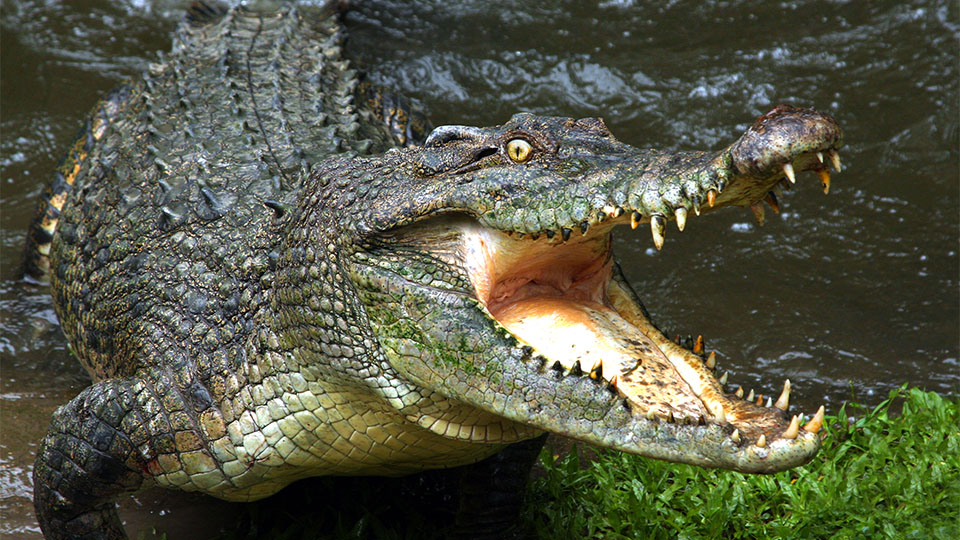
Luckily, there are many safe ways to see these prehistoric creatures in Australia. Whether that be at a live feeding show in the Sunshine Coasts Australia Zoo, or by doing a river cruise with Jumping Crocodile Cruise in the Northern Territory, there's plenty of options to witness a crocodile. These tours not only let you get close to the creatures, but also educate you on their eating habits, lifestyle, and how Australian's are doing their part to protect their habitat.
Tasmanian Devil
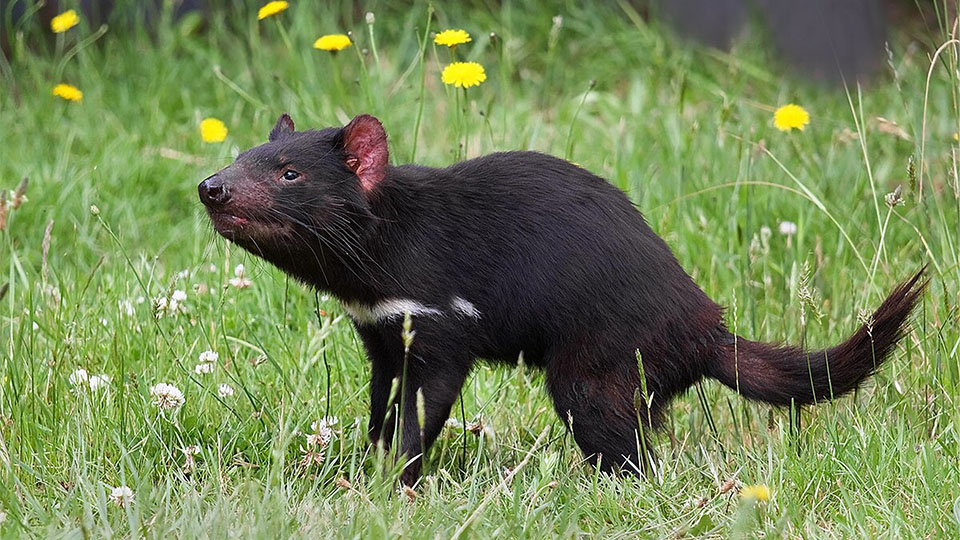
If you've heard of Tasmania, you've probably heard about the Tasmanian Devil - Tassies iconic little marsupial. The size of a small dog, the Tasmanian Devil is the largest carnivorous marsupial in the world. Known for their stocky, muscular build, black fur, and extremely loud and often disturbing screech, the Tasmanian Devil is an incredibly unique creature. Sadly, they are an endangered animal that only appear in the wild in Tasmania after going extinct on the mainland 3,500 years ago. There is an estimated 10,000 - 15,000 Tasmanian devils in the wild, with the animal being listed as 'endangered'. Seeing a tassie devil in the wild isn't common in Tasmania, but luckily, there are plenty of conservation efforts going on where you can not only see the Tasmanian Devil, but also contribute to it's survival.
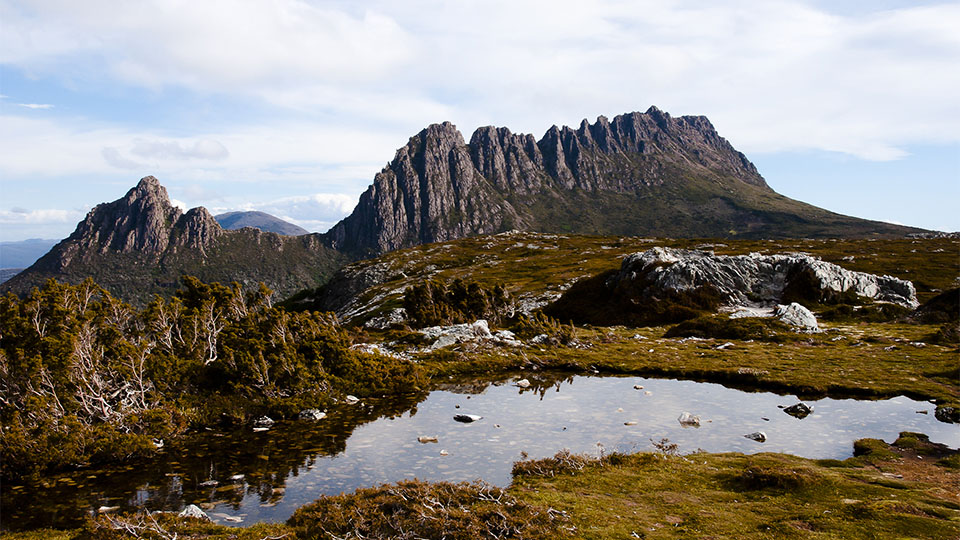
The Tasmanian Devil Eco-Tour in the wilds of the Tasman Peninsula gets you involved in the tassie devil conservation effort. Join a Land Rover expedition to witness a critical project safeguarding one of Earth’s last healthy devil populations. Visit a feeding site equipped with high-tech night cameras, monitoring for a mysterious disease, and analyse camera footage to identify individual devils, assess their health, and see if they’re breeding. This project is crucial in the fight for a species threatened by extinction. Fortunately, Tasman Peninsula’s devils remain healthy, and the goal is to keep it a disease-free haven. The tour concludes with a 1.5-hour visit to the Unzoo, showcasing Tasmanian devils and other unique wildlife in Tasmania.
Plan on visiting Tasmania? Check out our Ultimate Guide to Tasmania to get the most out of your tassie escape!
Koala
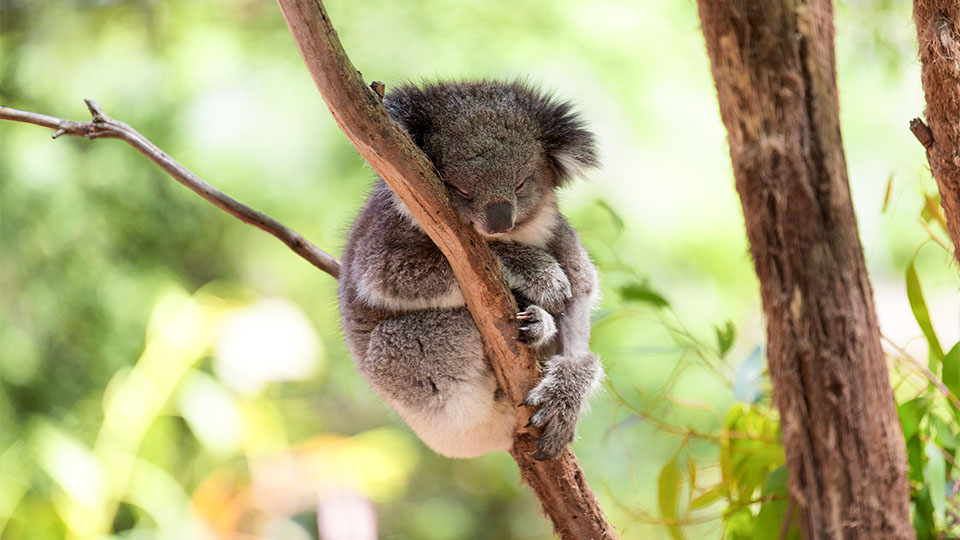
Possibly Australia's second-most iconic animal, the Koala, or sometimes referred to as the Koala Bear, is Australia's native tree-living, herbivorous marsupial. Easily recognisable by their stout, tailless body and large head with round, fluffy ears and dark nose - the koala usually inhabits the many eucalyptus trees dotted around Australia's mainland. Largely a sedentary creature, the koala closely resembles that of a sloth in terms of its daily activity and diet. Usually found in the eastern and south-eastern coast's of Australia, the koala makes its home in Australia's various national parks and are rarely seen near cities and suburban areas. Recently, the koala was considered a vulnerable species after the great bush fires of 2019 and 2020, where the catastrophic damage caused by the fires removed a large portion of koala habitat, thinning their numbers substantially. Fortunately, since the fires there has been a massive effort by the Australian Wildlife Conservancy group to rebuild this lost habitat and ensure the species survival.
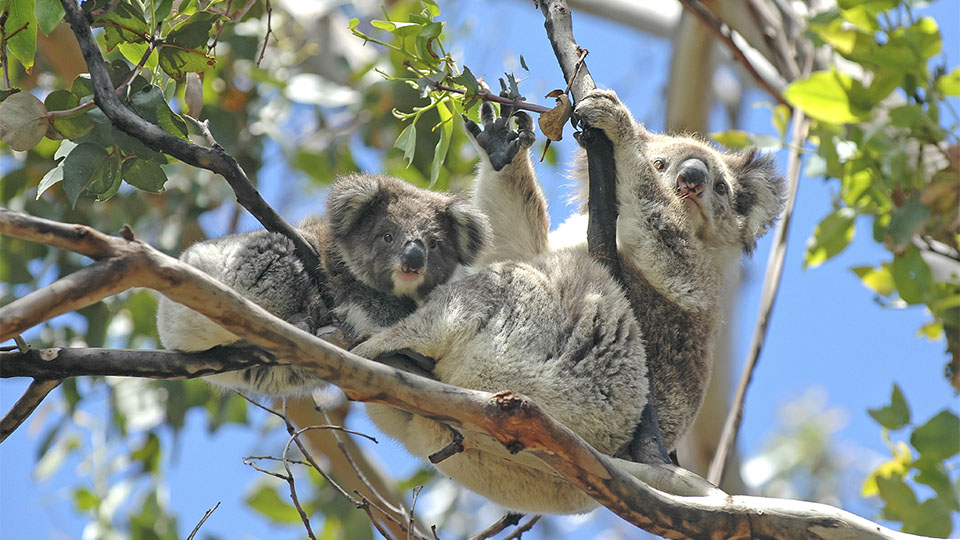
The Great Ocean Road is famed for its stunning coastal views and iconic landmarks such as the Twelve Apostles. However, it is also a fantastic destination for wildlife enthusiasts who want to see this iconic animal. Our Great Ocean Road & Grampians Wildlife Tour extends beyond the coast to the Grampians National Park, where you can spot kangaroos, emus, a variety of birdlife, and most importantly, koalas in the wild. The tour also includes visits to picturesque waterfalls and ancient Aboriginal rock art sites, offering a rich blend of natural beauty and cultural heritage. While you travel the Great Ocean Road, be sure to look out for warning signs for koalas on the roads, and when passing eucalyptus trees, keep your eyes on the lookout for these cuddly-looking animals hiding in the trees!
Quokka
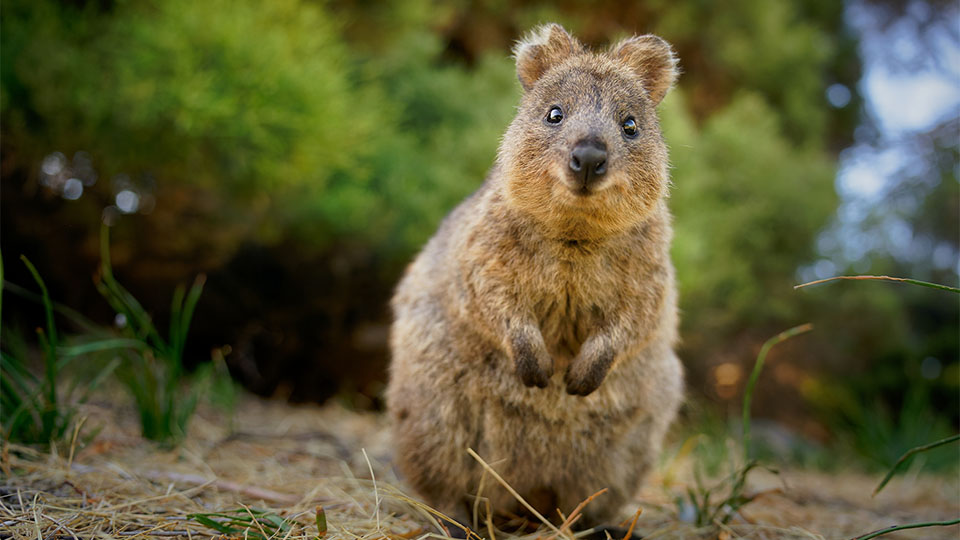
A slightly lesser known, but our pick as the cutest animal in Australia, the Quokka is a small macropod about the size of a domestic cat that is native to the islands off the coast of Western Australia. Found particularly in Rottnest Island just off Perth, this little bundle of fur is famous for posing for selfies or photos, often seen smiling. While they are certainly a highlight of any visit to Rottnest Island, these little creatures aren't just the only reason to visit this part of Australia. Making their homes on Rottnest Island and various other islands of the coast of Western Australia, the Quokka has picked one of Australia's most beautiful parts of the country to call home, with stunning white beaches, crystal clear waters, and beautiful climate, you'll enjoy some of the best Australia has to offer when you visit these islands.
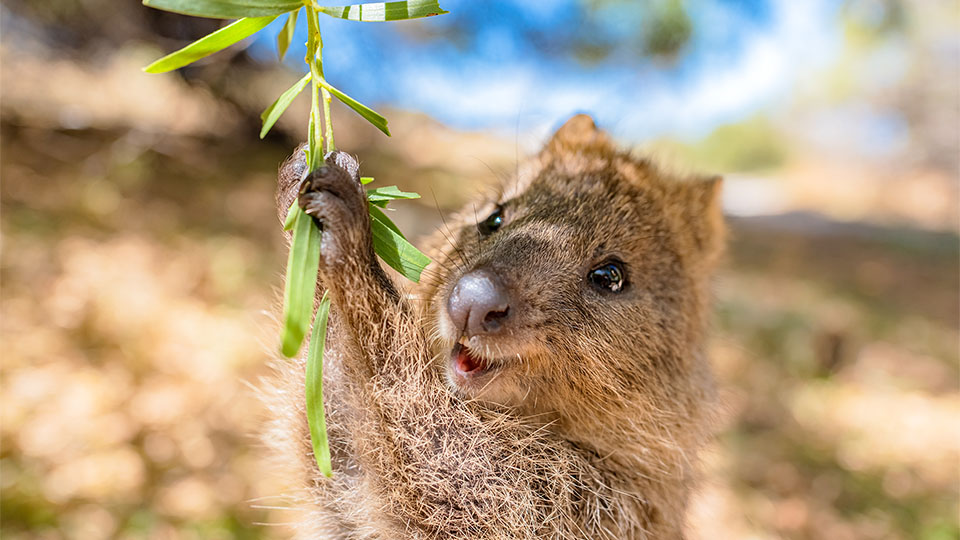
If checking out these little critters is a must-do for you when visiting Australia (and let's be honest, they're totally worth it!) then you should check out our Picture Perfect Perth Tour where you will experience Perth and it's surroundings, explore Rottnest Island, swim with dolphins and more! Make sure you grab a photo with these cheeky animals and send us photo when you tell us about your trip.
Humpback Whales
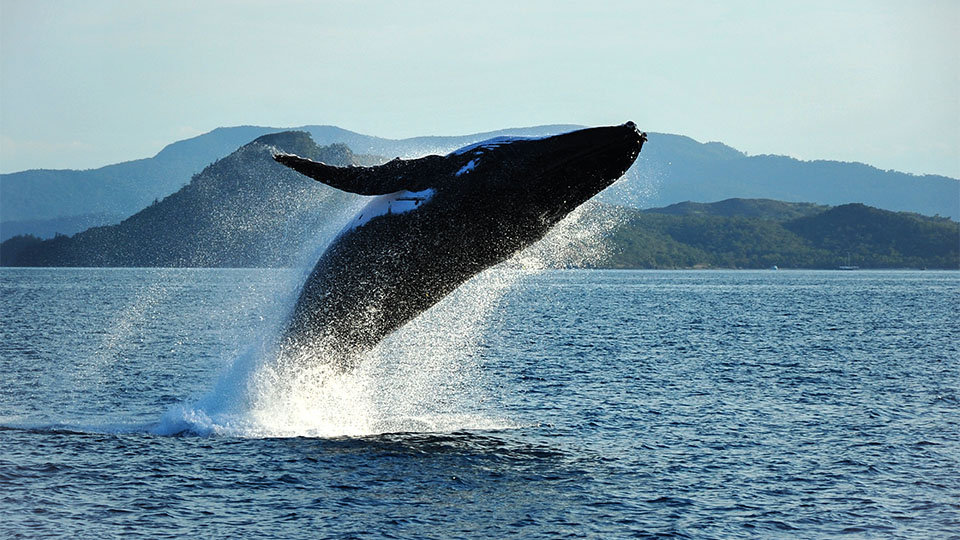
Australia is home to amazing wildlife on both land and sea. If we were to list all the amazing sea creatures, this blog would be far too long! However, if there's one incredible creature to talk about, its the Humpback Whales! These magnificent gentle giants migrate along the eastern coastline from Victoria to Queensland between April and November each year, providing spectacular acrobatic displays. The Humpback Whale is distinctive with its knobbly protuberances on the head and long flippers, making it the most easily recognised whale in the world. There are also known for breaching and being quite commonly seen close to the surface, making them popular with whale watchers. If you're lucky and swimming Australia's oceans, you might hear their beautiful and complex songs.
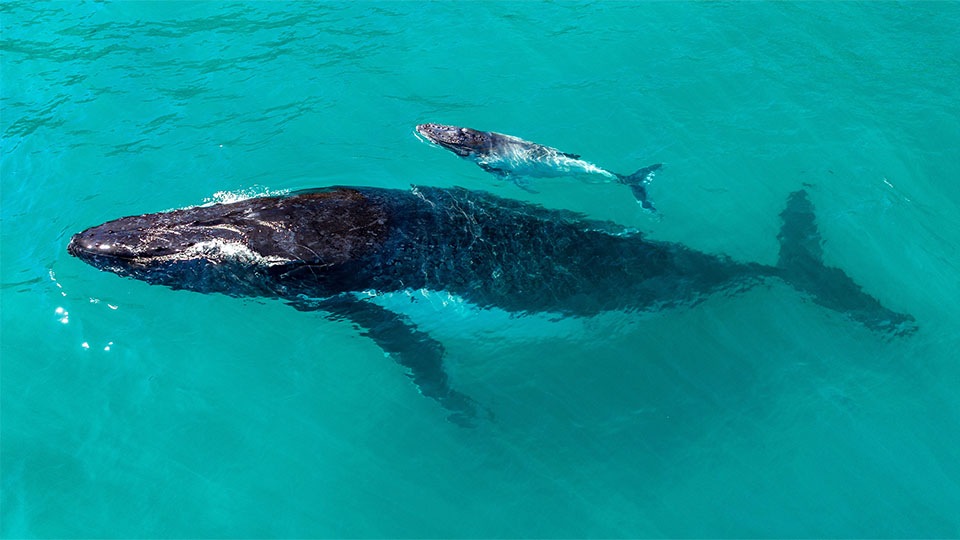
If you're visiting Australia during their migration period between April and November, you should check out some popular whale watching tours such as Whale Watching Sydney with Captain Cook Cruises, where you can experience these awe-inspiring creatures breach and put on a spectacular show! If taking to the sky is more your style, Sunshine Coast Helicopter Tours takes you to the skies where you can watch the whales from above and experience the Sunshine Coast like never before.
Australia's Wildlife, there is nothing like it
Australia is home to some of the worlds most unique wildlife, and you'll likely encounter some of these animals on your journey throughout this beautiful country. Whether you're exploring the lush rainforests of the Daintree, the rugged landscapes of Kangaroo Island, or the ancient wilderness of Tasmania, you'll run into some of these incredible animals that will make your experience in Australia unforgettable.
Check out our Wildlife and Nature tours if getting amongst these animals sounds like your ideal holiday experience! If you'd like to help support Australia's wildlife, check out the Australian Wildlife Conservancy to see what initiatives are happening around Australia, and how you can get involved! Remember when visiting Australia to respect the land, animals, and conservation acts.
Categories:
- National Parks & Wildlife
Published on: 24 Jul 2024, Written by: Jake Rudd